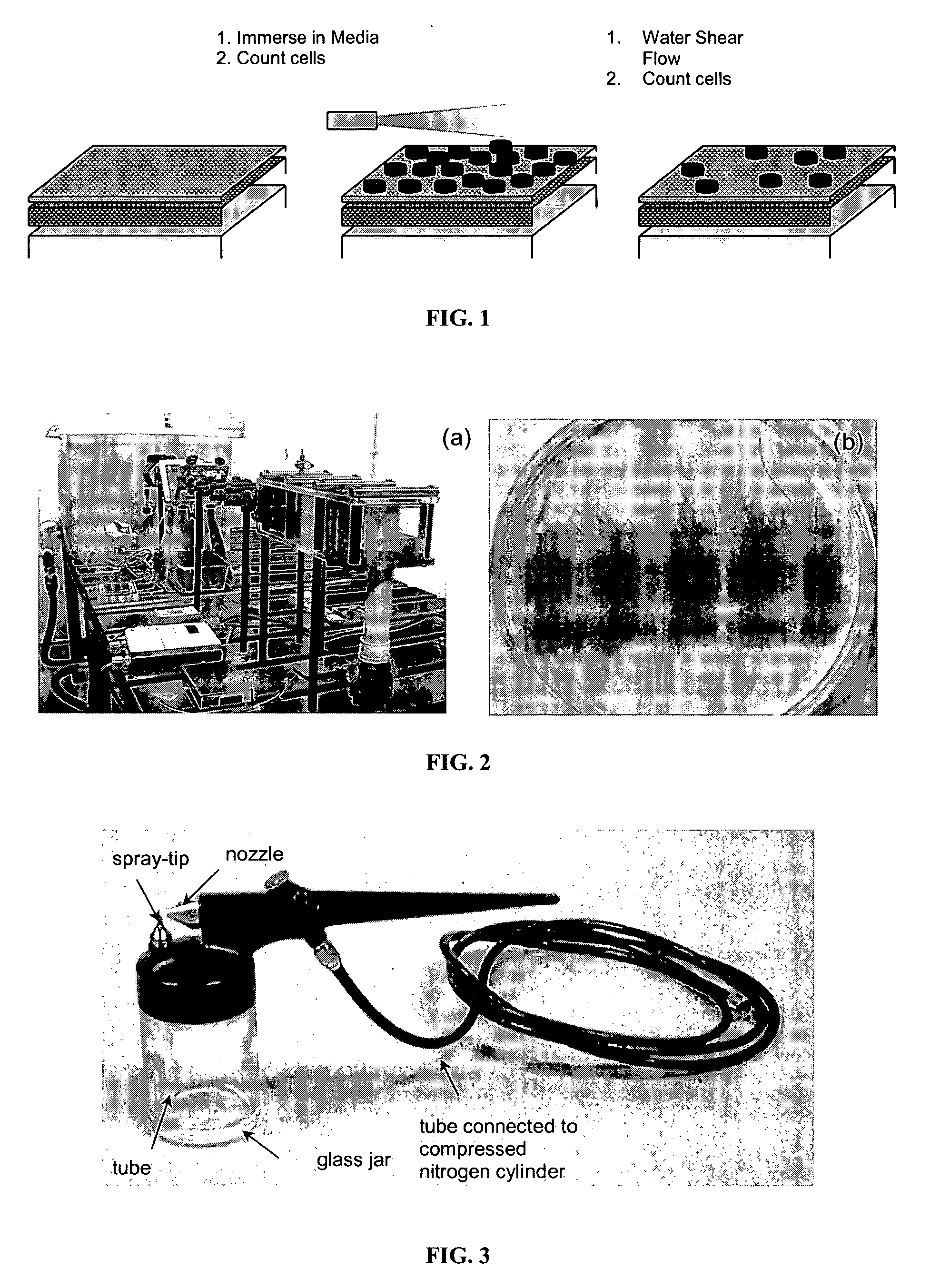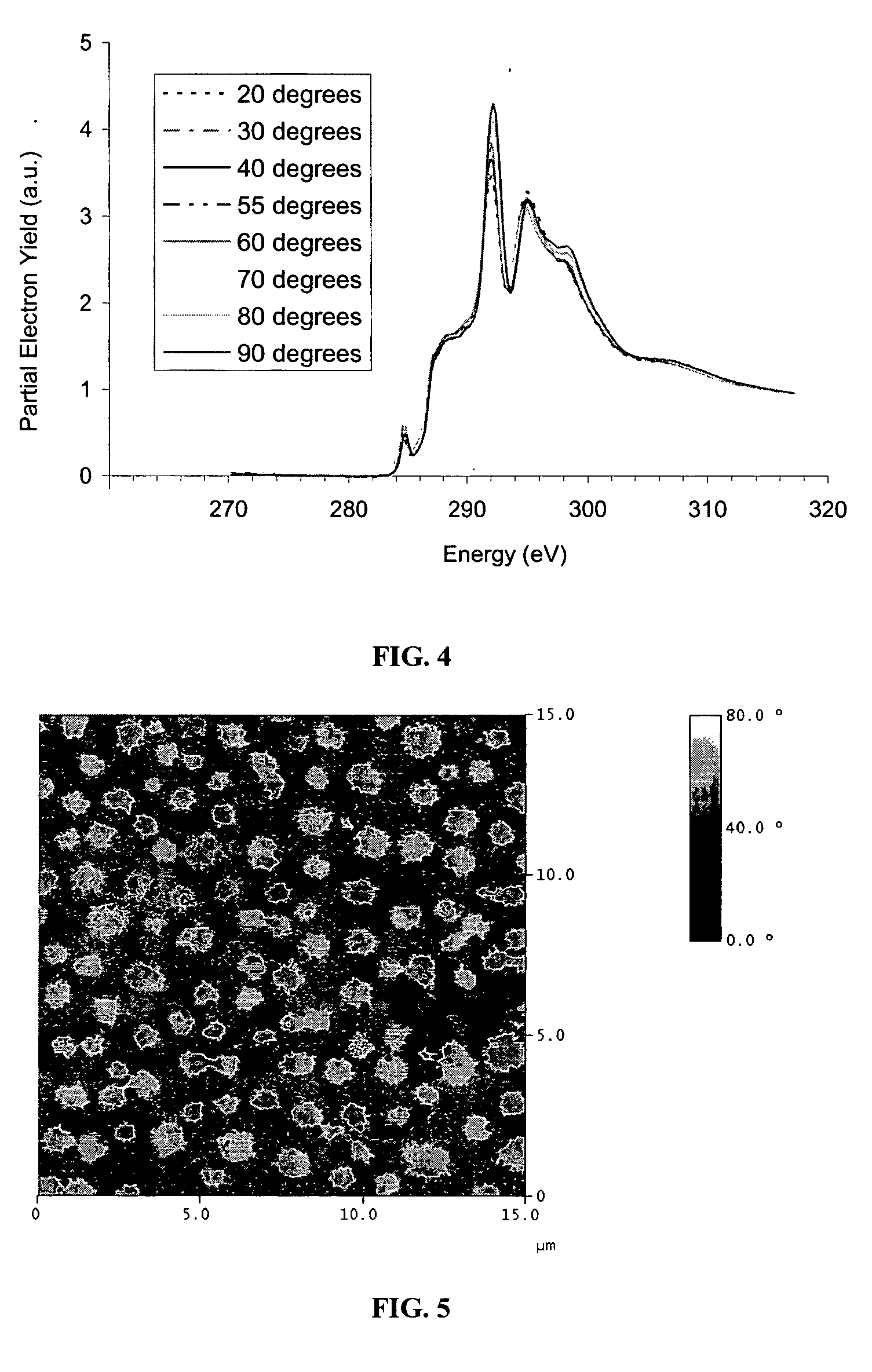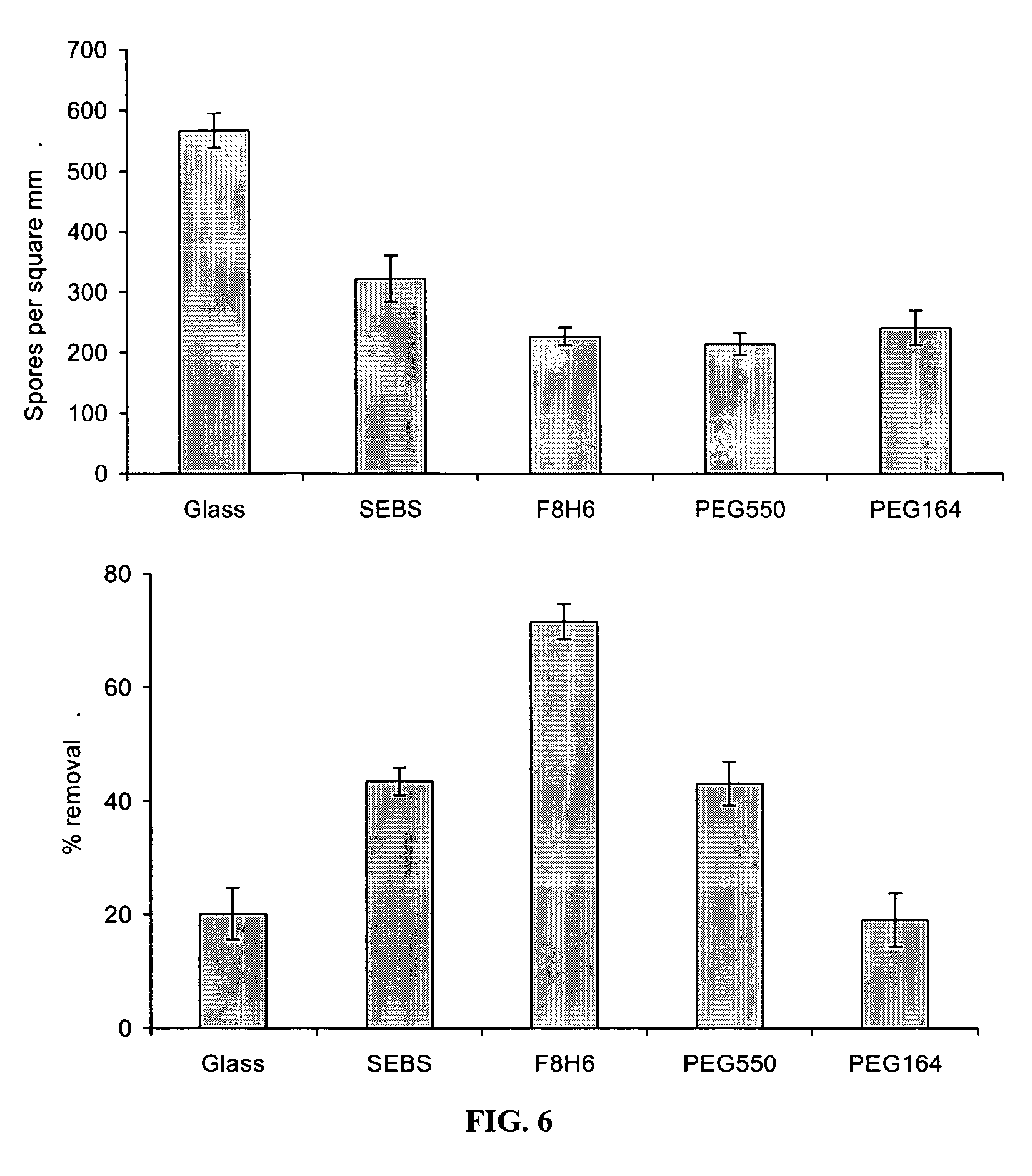Polymer coatings
a technology of polymer coating and coating, applied in the field of polymer coating, can solve the problems of increased fuel consumption by as much as 30%, increased drag on the ship, and marine fouling, and achieve the effect of reducing the adhesion strength
- Summary
- Abstract
- Description
- Claims
- Application Information
AI Technical Summary
Benefits of technology
Problems solved by technology
Method used
Image
Examples
example 1
Coatings Based on Side-chain Ether-linked PEG and FC Polymers
[0143] MATERIALS AND METHODS: Tetrahydrofuran (THF) was distilled from a sodium / benzophenone complex under nitrogen. Elastomeric styrene-ethylene / butylene-styrene (SEBS) G1562M was donated by Kraton Polymers (Houston, Tex.). All other reagents purchased from Aldrich Chemical Company (Milwaukee, Wis.) and were used without further purification unless otherwise mentioned.
Synthesis of Block Copolymer Polymer (PS / PI(25 / 15)) and Hydroxylated Block Copolymer (PS / PI(25 / 15)—OH)
[0144] These polymers were prepared via anionic polymerization followed by polymer analogous modification. Poly(styrene-b-isoprene) (PS / PI(25 / 15)) polymers with poly(styrene) molecular weight (Mn) of 25,000 g / mol and poly(isoprene) molecular weight of 15,000 g / mol and 1,2- and 2,3-polyisoprene content greater than 97% were synthesized (polydispersity of 1.05) and subjected to hydroboration-oxidation reaction to yield the corresponding hydroxylated dibloc...
example 2
Functionalization of Backbone Vinyl Groups
[0187] Anionic polymerization of styrene and isoprene in THF at −78° C. often results in about 3-7% 1,4-diene polymerization, wherein the isoprene double bond forms within the polymer backbone. Such a polymer can be represented as formula (IV) below (a specific example of a compound of formula (III)), wherein the units n1, n2, and n3 occur randomly within the brackets. The 1,4-derived subunit is illustrated within the n3 segment. Formula (IV) is for illustration only, and one skilled in the are would recognize that the methyl group of the 1,4-derived mer could be located at either the 2-position, as shown, or at the 3-position of the mer. Other variables are as defined by formula (II) above.
[0188] Hydroboration / oxidation reactions can hydroxylate the vinyl group contained within the polymer backbone (n3), as illustrated in Scheme 2.1 below. Bromination of the hydroxyl group produces the mers represented in structure (A). Etherification wi...
example 3
Side-chain Ether-linked Styrene-Butadiene Block Copolymers
[0190] A novel synthetic approach to side-chain ether linked surface active block copolymers (SABC)s is provided herein (Scheme 3.1). Various polymers with vinyl groups within in the polymer backbone can be employed. The instant example employed a polystyrene-b-polybutadiene-b-polystyrene triblock polymer. A suitable triblock polymer is Kraton D-1102, 45,000 g / mol, 30 wt. % of which is the polystyrene block.
Bromination Process
[0191] Commercially available Kraton® block copolymers, polystyrene-polybutadiene-polystyrene (SBS), and polystyrene-polyisoprene-polystyrene (SIS), were brominated via liquid bromine in tetrahydrofuran solution (>98% conversion). Commercially available semifluorinated alcohols, such as 1H, 1H,2H,2H-perfluorododecanol and 1H,1H,2H,2H-perfluorodecanol, or methyl ether poly(ethylene glycol)s of various molecules weights were attached to the brominated block copolymers using catalytic lithium aluminum h...
PUM
| Property | Measurement | Unit |
|---|---|---|
| thickness | aaaaa | aaaaa |
| thickness | aaaaa | aaaaa |
| thickness | aaaaa | aaaaa |
Abstract
Description
Claims
Application Information
 Login to View More
Login to View More - R&D
- Intellectual Property
- Life Sciences
- Materials
- Tech Scout
- Unparalleled Data Quality
- Higher Quality Content
- 60% Fewer Hallucinations
Browse by: Latest US Patents, China's latest patents, Technical Efficacy Thesaurus, Application Domain, Technology Topic, Popular Technical Reports.
© 2025 PatSnap. All rights reserved.Legal|Privacy policy|Modern Slavery Act Transparency Statement|Sitemap|About US| Contact US: help@patsnap.com



